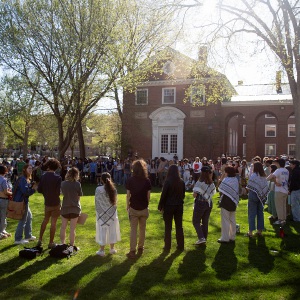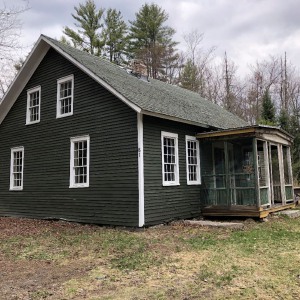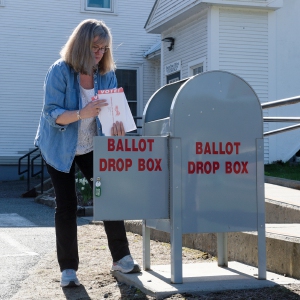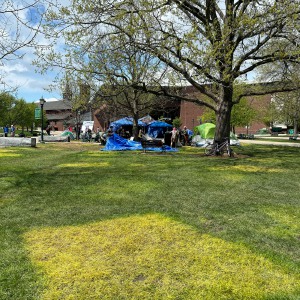Hanover gets feedback as town crafts first master plan in 20 years
| Published: 10-25-2023 10:38 PM |
HANOVER — Housing, transportation and downtown vibrancy rank high among community priorities in a new town master plan — the first update to Hanover’s planning and development goals since 2003.
Over 20 Hanover residents attended an open house on Tuesday with town planning officials to discuss Hanover’s new master plan proposal, a comprehensive document of town planning goals for the next decade.
Town planning staff have hosted three open houses in the last two weeks to gather community feedback on the plan, which will help inform the Planning Board on final revisions of the document. The board hopes to approve a final plan by early December.
The town has also launched an online survey, which can be found along with a draft of the plan on the project website, https://hanovernhmasterplan.com.
The proposed plan comprises 10 chapters of town goals and strategies to achieve community priorities, which include increasing housing, advancing multi-modal transportation, cultivating economic and social vitality downtown and reducing the town’s carbon footprint.
“A master plan is basically a vision document or an aspirational document,” Planning Board Chairman Brian Edwards said in an interview. “It has no legal basis on its own. So a lot of what has to happen if it’s going to be implemented is for us to change (certain) zoning regulations or site plan regulations.”
The Hanover plan also includes goals pertaining to environmental sustainability, economics and social equity, according to Planning Board members.
New Hampshire statute RSA 674 recommends that master plans be updated every five to 10 years to ensure that the town vision and goals stay current with societal needs. Hanover was several years past this recommended time when Planning and Zoning Director Rob Houseman took over the department in 2016.
Article continues after...
Yesterday's Most Read Articles
 Dartmouth administration faces fierce criticism over protest arrests
Dartmouth administration faces fierce criticism over protest arrests
 Hanover house added to New Hampshire Register of Historic Places
Hanover house added to New Hampshire Register of Historic Places
 Sharon voters turn back proposal to renovate school
Sharon voters turn back proposal to renovate school
Work on the new master plan began in 2021 with the formation of a nine-member advisory committee, which worked in coordination with Houseman, Senior Planner Vicki Smith and consultants from VHB, an engineering firm based in Watertown, Mass. Goals in the plan were based on priorities identified by residents in surveys and public listening sessions organized by the advisory committee.
While the novel coronavirus pandemic in 2020 delayed the start of the master plan project, Houseman noted that any town plan before 2020 would need updating today because of dramatic changes in the Upper Valley following the pandemic.
“One of the things we’ve seen (since 2020) is a net reduction in overall trips by single-occupant vehicles,” Houseman said in an interview. “In some cases, the average daily trips are down by (as much as) 30%. And they are staying down, which is an unusual trend, given how COVID is over.”
Houseman, who partly attributed the decrease in vehicles to opportunities to work remotely, said that usage of Hanover’s downtown parking garage has declined, while Advance Transit, the free bus service that makes stops in Hanover, has had an uptick in ridership.
The pandemic also illustrated that Hanover needs to attract a broader customer base to its downtown, which Houseman said is “very fragile” economically due to its heavy dependence on Dartmouth College.
Houseman said the master plan was designed so that each topic and chapter is “interlinked” and that the goals compliment one another rather than compete.
For example, a key housing goal in the plan is to develop approximately 800 housing units between 2020 and 2040. This target represents Hanover’s contribution to a regional goal laid out in the 2017 housing study, Keys to the Valley, which calls for the creation of 10,000 housing units in the Upper Valley by 2030.
But housing needs to be developed with consideration to other planning goals such as in transportation — where the town aims to reduce total vehicle emissions by expanding public transit service, promoting ride-sharing and by improving pedestrian and cycling routes.
This transportation goal, Houseman said, is partly why the housing plan proposes to develop housing in Hanover’s downtown district, a high-density residential area, rather than in the more spacious rural zones.
“Rural Hanover, like any rural area, is more remote and occupants need more vehicles in remote areas,” Houseman told residents, adding that rural areas are particularly less ideal for affordable housing projects because many people with lower incomes do not own cars and rely instead on public transportation, walking or cycling.
Houseman said that Hanover has sufficient water and sewer capacity to serve an increase of 800 housing units, as well as the space to develop those projects.
Over 30% of Hanover’s water-sewer capacity is currently being leased to Lebanon, which Hanover has the right to take back with one year’s notice if needed, Houseman said.
The creation of new housing will primarily be accomplished by amending town zoning rules to expand development opportunities, Houseman said. In recent years, town voters have approved mixed-use developments in downtown Hanover and the creation of a new zoning district that allows higher-density residential development and some accessory commercial uses along West Wheelock Street. As a result of this new zoning district, Dartmouth College announced plans last month to build “apartment-style units” with a total of 250 to 300 beds on West Wheelock Street.
Houseman said the town is also proposing a zoning change to raise the allowable building height in the downtown to 55 feet, a 10-foot increase from the present ordinance.
Residents appeared generally supportive of the proposed plan, using the open house to ask questions about the plan’s content or to suggest strategies to help achieve the town goals.
Some residents, for example, thought the town could consider greater building height allowances downtown than the additional 10 feet.
Jim Rubens, who owns the Hanover Park commercial building on Lebanon Street, said he could envision some areas downtown where a height of six to 10 stories, or roughly between 72 to 120 feet, would be reasonable.
Jennie Chamberlain, a Selectboard member and chairperson of the Hanover Bike-Walk Committee, complimented the goals to improve bicycle and pedestrian accessibility and safety, which include upgrading streetlights and increasing availability of e-bikes and bike-sharing networks.
“There’s always the (more difficult) next step, which is implementing the plan,” Chamberlain said in an interview. “But I think the goals are in the right place.”
Patrick Adrian may be reached at padrian@vnews.com or at 603-727-3216.

 Students take down pro-Palestinian encampment at UVM
Students take down pro-Palestinian encampment at UVM
